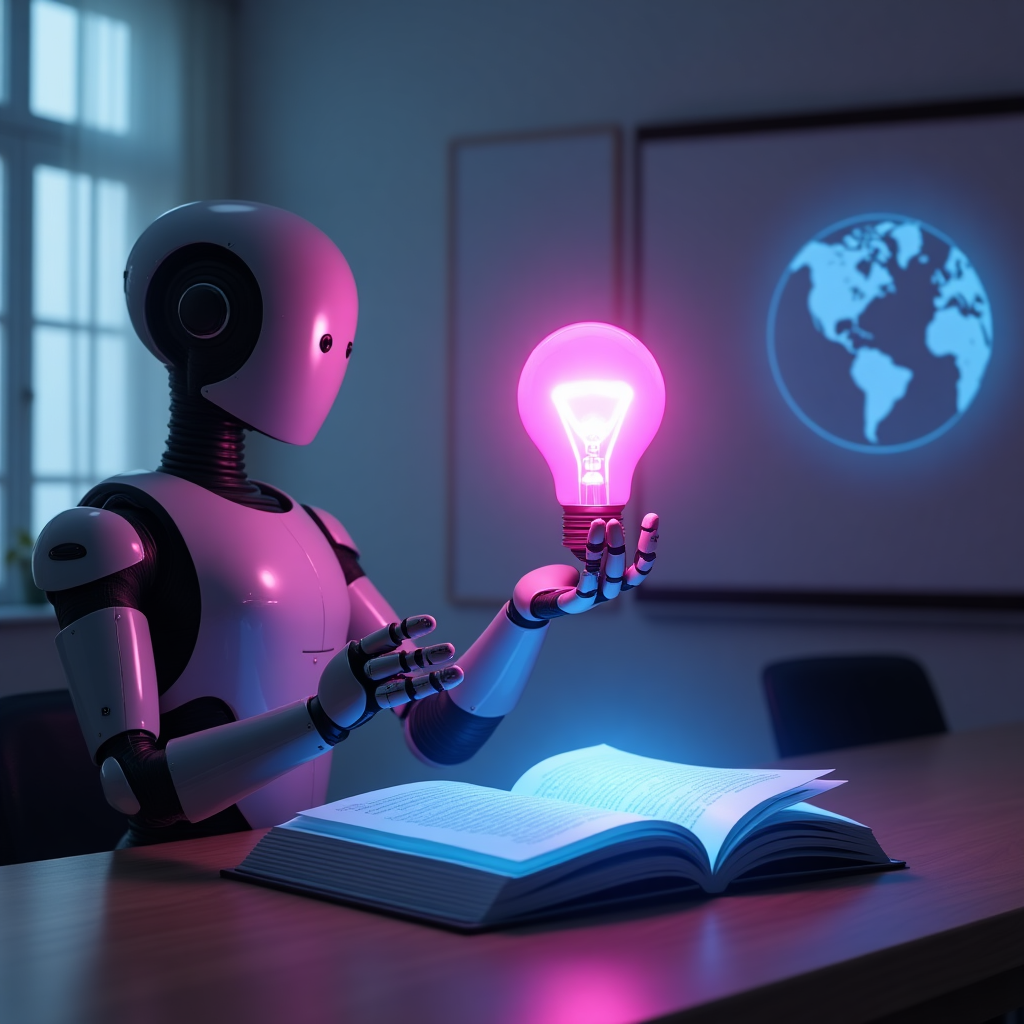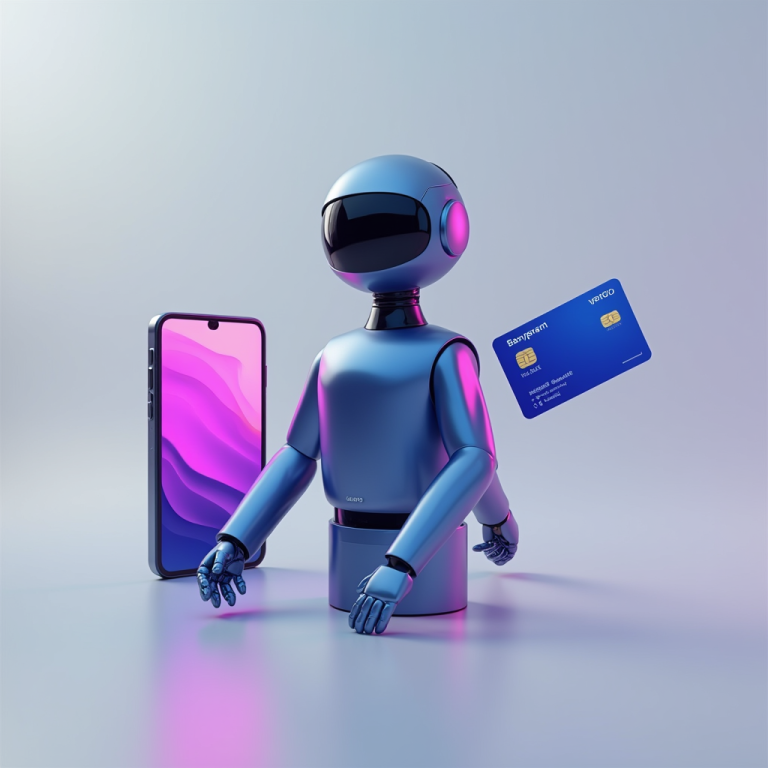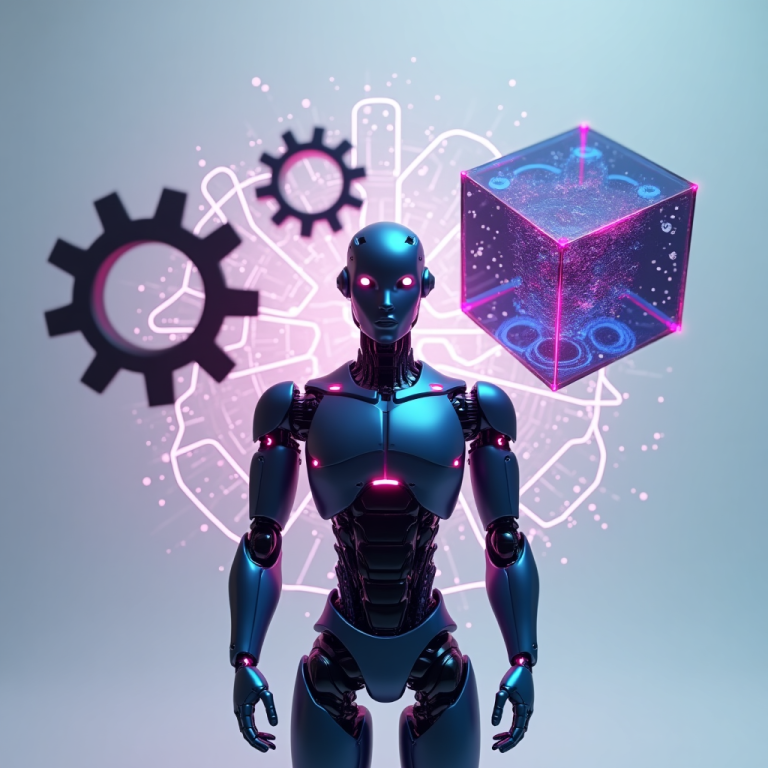Artificial Intelligence is rewriting the rulebook for education. From smarter classrooms to deeply personalized learning paths, AI in education is not just a buzzword—it’s a revolution.
In 2025 and beyond, schools, colleges, and universities must embrace AI to prepare students for a tech-first world. Buckle up as we explore how AI is transforming education and why now is the perfect time to get involved.
Table Of Contents
AI in Education
At its core, AI in education refers to using machine learning, natural language processing (NLP), and data analytics to enhance teaching, personalize learning, automate tasks, and offer predictive insights.
The goal? Better learning experiences for students and less administrative burden for educators.
According to EducationWeek, more than 60% of U.S. schools are already experimenting with some form of AI—whether it’s intelligent tutoring or auto-grading essays.
Benefits of AI in Education
Personalized Learning
- AI tailors content to individual student’s learning style and pace.
- Example: Smart platforms adapt difficulty levels based on real-time performance.
Efficiency
- Teachers save hours every week on grading and lesson planning.
- AI automates routine tasks and frees up time for strategic instruction.
Scalability
- One teacher can “teach” thousands through scalable AI-powered courses.
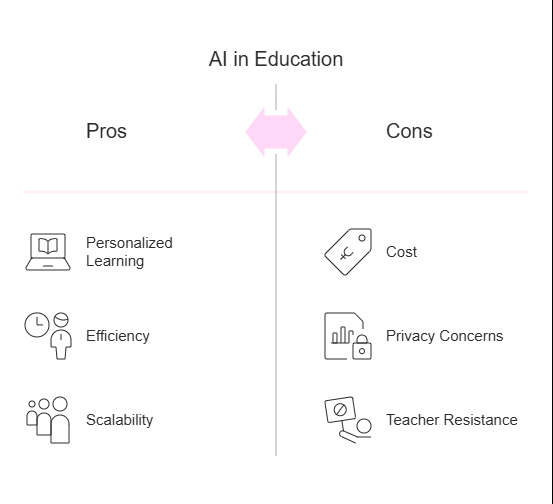
Challenges of AI in Education
- Data Privacy: Protecting sensitive student information is crucial.
- Bias and Fairness: AI must be monitored for algorithmic bias.
- High Initial Costs: AI systems require upfront investment.
- Teacher Training: Educators need professional development to use AI effectively.
10 Game-Changing Applications of AI in Education
1. Intelligent Tutoring Systems (ITS)
AI tutors offer real-time feedback, hint generation, and personalized instruction.
Example: Carnegie Learning’s AI math tutor.
2. Personalized Learning Paths
AI maps a student’s strengths and weaknesses, offering a custom roadmap to mastery.
Example: Content sequencing with platforms like DreamBox Learning.
3. AI Grading and Assessment
Automated essay scoring, MCQ grading, and performance analytics.
Example: Gradescope (powered by AI).
4. Virtual Learning Assistants
24/7 support bots answer common student queries instantly.
Example: Georgia State University’s “Pounce” chatbot. Source
5. Adaptive Learning Platforms
Systems adapt course difficulty based on real-time learning analytics.
Example: Coursera’s adaptive testing system.
6. Smart Content Curation
AI suggests relevant videos, quizzes, and articles for lesson plans.
Example: ScribeSense for content filtering.
7. AI for Special Education
Customized learning aids for students with disabilities.
Example: AI-based speech recognition for hearing-impaired students.
8. Predictive Analytics for Student Performance
Early warning systems detect at-risk students through behavior analysis.
Example: BrightBytes analytics platform.
9. AI-Enhanced Career Guidance
Suggests college majors and career paths using machine learning models.
Example: AI career advisors like Yoodli.
10. Gamification and AI
AI personalizes educational games to maximize engagement.
Example: Duolingo’s AI-driven language games.

Case Studies: Real-World Success
Georgia State University
- Reduced summer melt by 22% with chatbot Pounce.
- Increased student engagement and retention.
Stanford Online High School
Uses AI to customize advanced curricula for gifted students globally.
Best Practices for Implementing AI in Education
Start small: Pilot programs in limited subjects.
Train teachers: Continuous upskilling is vital.
Prioritize privacy: Use secure, GDPR-compliant platforms.
Monitor fairness: Audit AI models for bias regularly.
Future Trends of AI in Education
- AI + Metaverse Classrooms: VR-based AI learning environments.
- Emotional AI: Systems detecting emotional well-being of students.
- Blockchain + AI: Immutable, verified academic records.
Top AI Tools for Education (2025)
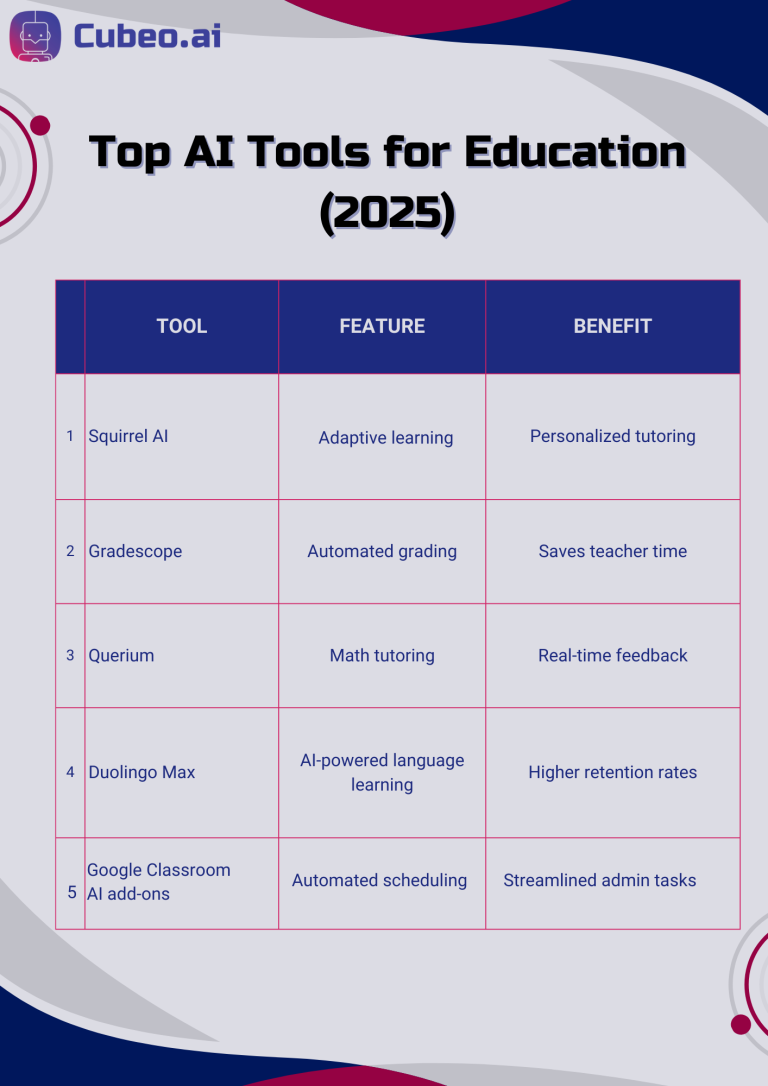
Cubeo AI in Education
At Cubeo, we believe everyone should build AI, even without coding. With Cubeo AI, educators can:
- Build custom AI learning assistants.
- Create smart educational chatbots.
- Use data-driven insights for course design.
The power of AI in education is undeniable. From enhancing engagement to enabling personalized learning at scale, AI is the future of schooling.
Whether you’re a teacher, principal, or EdTech innovator, the time to embrace AI is now.
